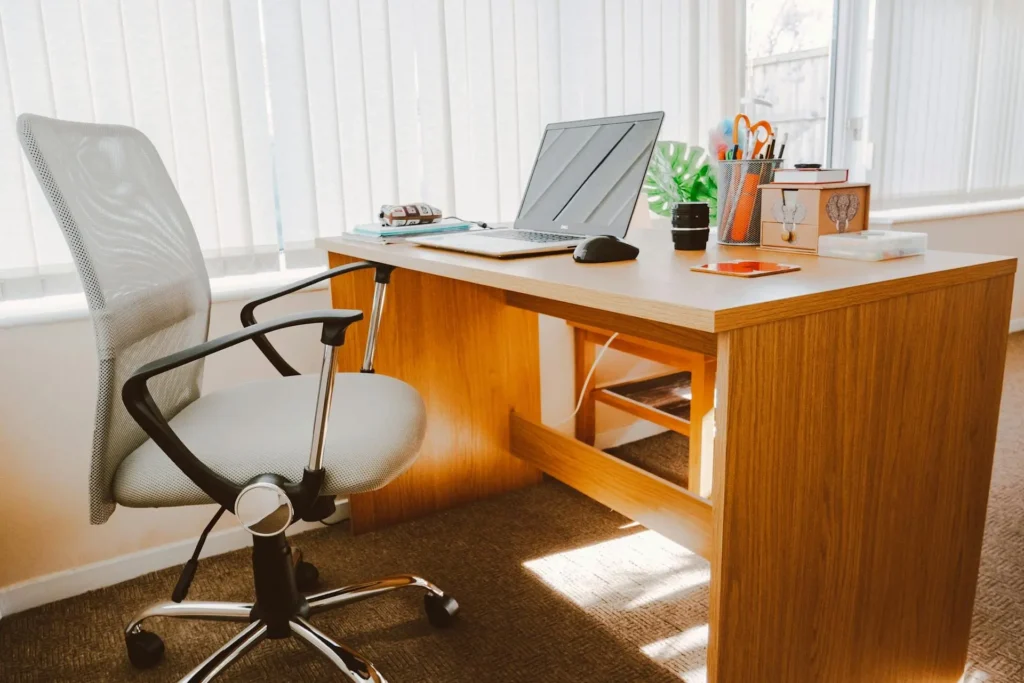In today’s fast-paced work environment, ergonomic office furniture has become essential, especially in small workspaces where every square inch counts. Compact offices often require smart design choices that not only enhance comfort but also boost productivity.
Ergonomic furniture is specifically designed to support the body’s natural posture, helping to reduce strain and prevent long-term musculoskeletal issues.
This is particularly important for small offices, where limited space can force employees into awkward positions, ultimately affecting their well-being and work performance.
Ergonomic design improves productivity by ensuring that workstations are tailored to the user’s needs. When furniture such as chairs and desks are adjustable and designed with ergonomics in mind, they promote proper posture and efficient movement.
For example, ergonomic chairs with adjustable lumbar support and armrests help keep the spine aligned, reducing the risk of back and neck pain.
Similarly, adjustable desks and compact storage solutions allow users to maintain a clean and organized workspace, minimizing distractions and enabling better focus on tasks.
The result is a workspace where comfort and efficiency go hand in hand, helping employees stay energized and productive throughout the day.
However, setting up an ergonomic workspace in a compact area is not without its challenges. Small workspaces often lack the room needed for full-sized ergonomic furniture, forcing many to compromise on ideal configurations.
Space limitations can make it difficult to fit adjustable desks, monitor arms, or even storage units without creating clutter. Additionally, budget constraints may limit the ability to invest in specialized, space-saving ergonomic solutions. Balancing aesthetics, functionality, and comfort in a confined area requires careful planning and creative design.
Despite these hurdles, integrating ergonomic principles into small workspaces can transform a cramped office into an efficient, health-promoting environment.
By understanding the importance of ergonomic office furniture and the benefits of a well-designed workspace, you can create an environment that supports both productivity and well-being, even in the smallest of spaces.
Whether you’re setting up a home office or revamping a compact corporate workstation, investing in ergonomic design is a smart way to protect your health and enhance your work performance.
Must Have Office Furniture for Small Spaces
1. Ergonomic Office Chair
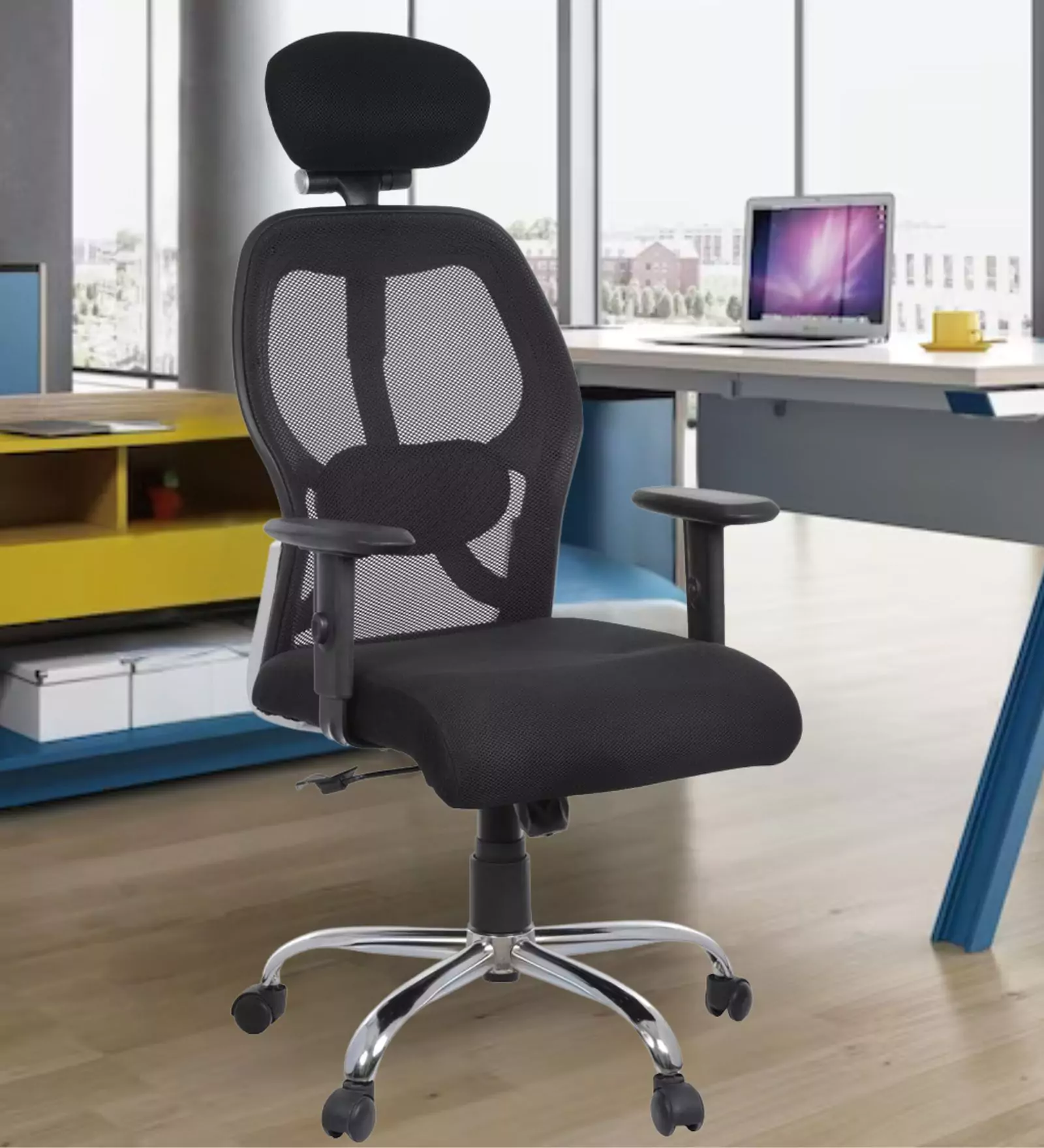
When space is at a premium, investing in a compact yet supportive ergonomic office chair is essential for a productive and healthy work environment.
In small workspaces, an office chair must offer both comfort and adjustability without taking up too much room. One of the key features to look for is robust lumbar support.
Proper lumbar support helps maintain the natural curve of your lower back, reducing strain and preventing long-term back pain, a common issue for those who spend hours seated at a desk.
Equally important are adjustable armrests. These allow you to customize the chair to fit your body and work style, ensuring that your arms rest comfortably while you type or use your mouse.
Adjustable armrests help reduce shoulder tension and prevent the kind of repetitive strain that can lead to discomfort over time.
For small workspaces, the best compact office chairs are those specifically designed to maximize seating comfort within a limited footprint. Look for chairs that offer multiple adjustment features, such as seat height, tilt, and armrest position, so that you can fine-tune your seating position for optimal support.
Many modern ergonomic chairs are designed with a sleek profile, making them ideal for tight corners or small home offices without compromising on the essential ergonomic benefits.
Another important consideration is the type of material used in the chair’s construction, particularly when comparing mesh versus cushioned chairs. Mesh chairs are popular in small spaces because their breathable design keeps you cool during long work sessions.
Their firm support and lightweight structure make them an excellent choice if you’re concerned about overheating in an enclosed area. On the other hand, cushioned chairs offer a plush, padded seating experience that some users find more comfortable, especially during extended periods of sitting.
However, cushioned chairs can sometimes be bulkier, so it’s important to choose a model that balances comfort with a compact design.
2. Compact Adjustable Desk
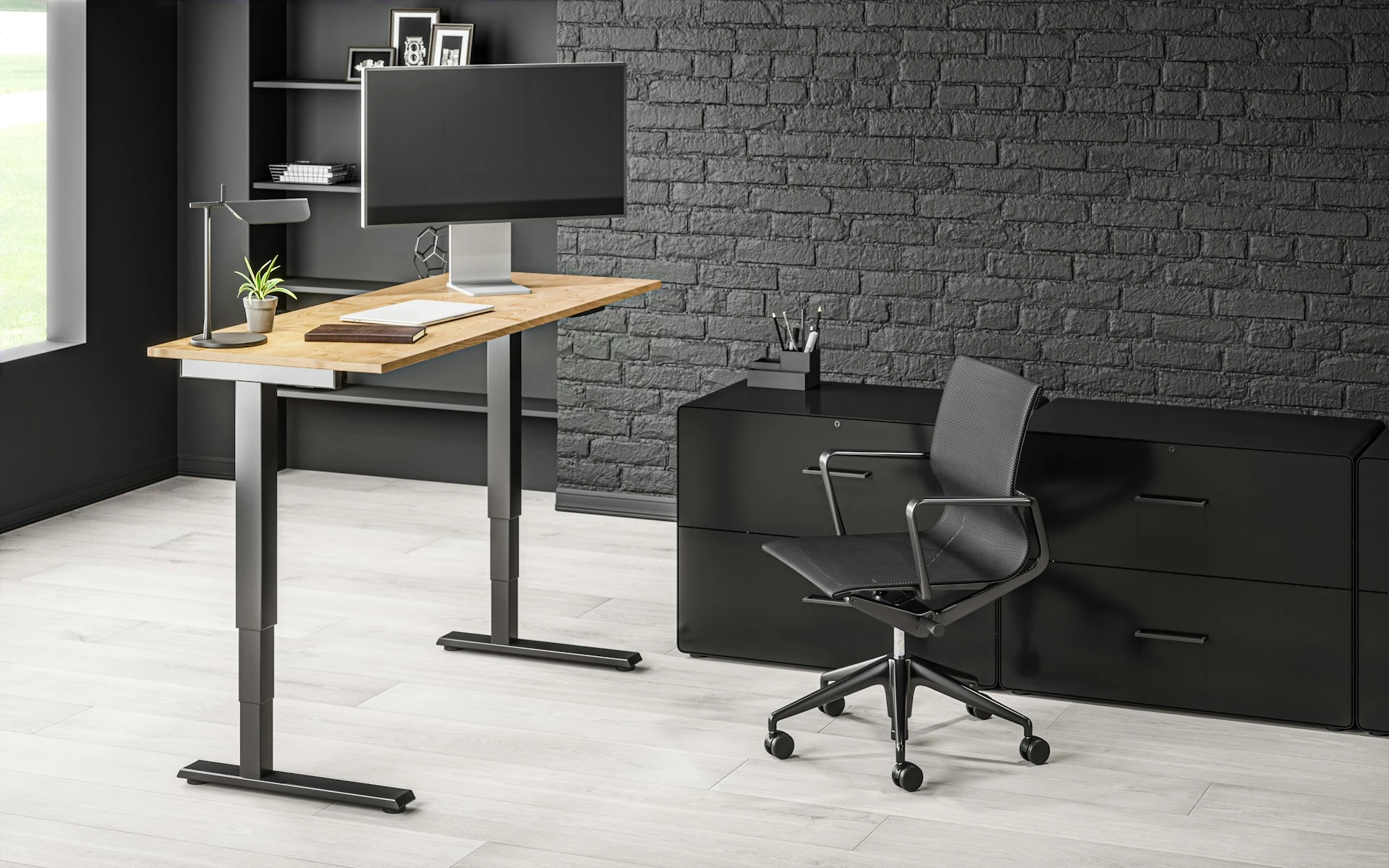
In small home offices, maximizing every inch of available space is essential. A compact adjustable desk is designed to fit into tight spaces while offering the flexibility to switch between sitting and standing positions.
Height-adjustable desks are a game-changer for small workspaces because they promote better posture, reduce fatigue, and even boost productivity by allowing you to alternate between sitting and standing throughout your day.
One of the primary benefits of a height-adjustable desk is its ability to help alleviate the negative effects of prolonged sitting. By simply raising the desk, you can improve blood circulation and reduce the risk of back and neck pain. This ergonomic flexibility is especially important in a small home office, where comfort and efficiency are paramount.
When space is at a premium, space-efficient desk designs become crucial. Foldable desks offer an excellent solution by collapsing flat when not in use, thereby freeing up valuable floor space.
Wall-mounted desks provide another smart alternative; by attaching directly to a wall, they eliminate the need for bulky furniture and help maintain a clutter-free environment. Additionally, L-shaped desks are ideal for small spaces because they fit neatly into corners, maximizing the available work surface without dominating the room.
Determining the ideal desk height is key to achieving maximum comfort. Ergonomic guidelines suggest that when seated, your desk should allow your elbows to form a 90-degree angle, with your wrists in a neutral position to minimize strain.
For standing, the top of your monitor should be at or just below eye level, ensuring that you do not have to tilt your head up or down. This careful attention to desk height and adjustability not only enhances your overall comfort but also helps create a more productive work environment.
By choosing a compact adjustable desk with innovative space-saving features, you can transform even the smallest home office into an efficient and ergonomic workspace that supports both your health and productivity.
3. Wall-Mounted or Floating Desks
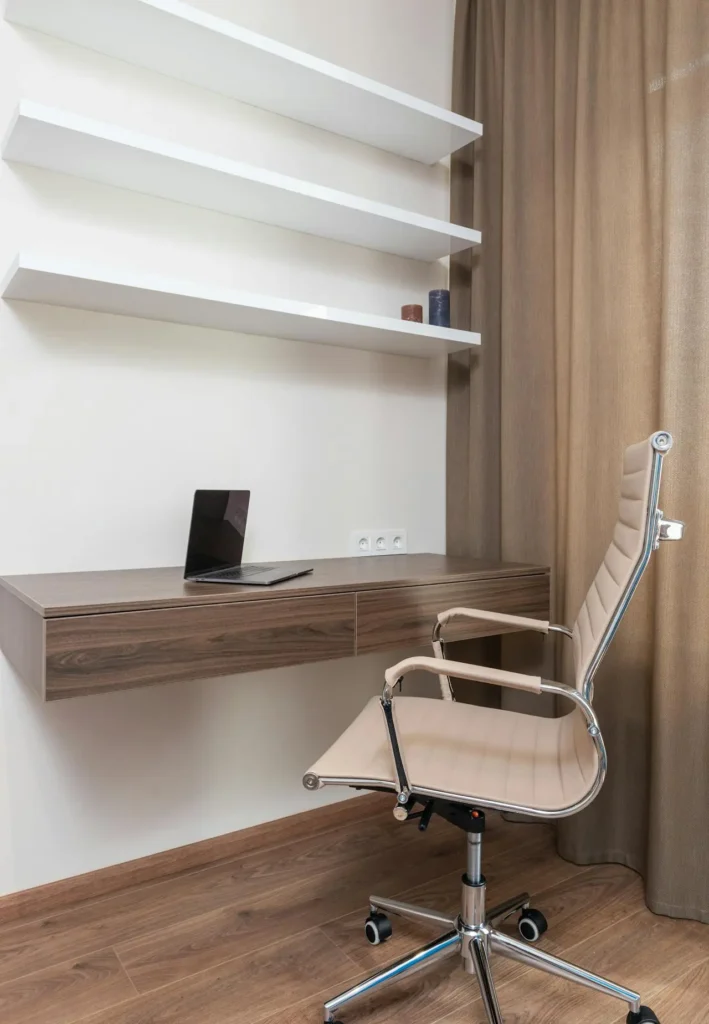
Floating desks are an ideal solution for small home offices because they save valuable floor space while offering a clean, minimalist look. Since these desks are mounted directly on the wall, they eliminate the need for bulky legs or bases, freeing up room for movement and additional storage.
This space-saving design not only makes a compact office feel larger and less cluttered but also creates a modern, streamlined aesthetic that enhances the overall work environment.
For remote work, the best wall-mounted desks offer both functionality and style. Look for desks that come with built-in features such as cable management systems to keep wires out of sight and integrated storage options to reduce clutter.
Popular options include models with fold-down surfaces that can be easily tucked away when not in use, ideal for those who need to maximize every inch of their space. Whether you choose a sleek, simple design or a desk with additional storage like drawers or shelves, a well-designed wall-mounted desk can transform your home office into a productive and organized workspace without sacrificing style or functionality.
4. Under-Desk Storage and File Cabinets
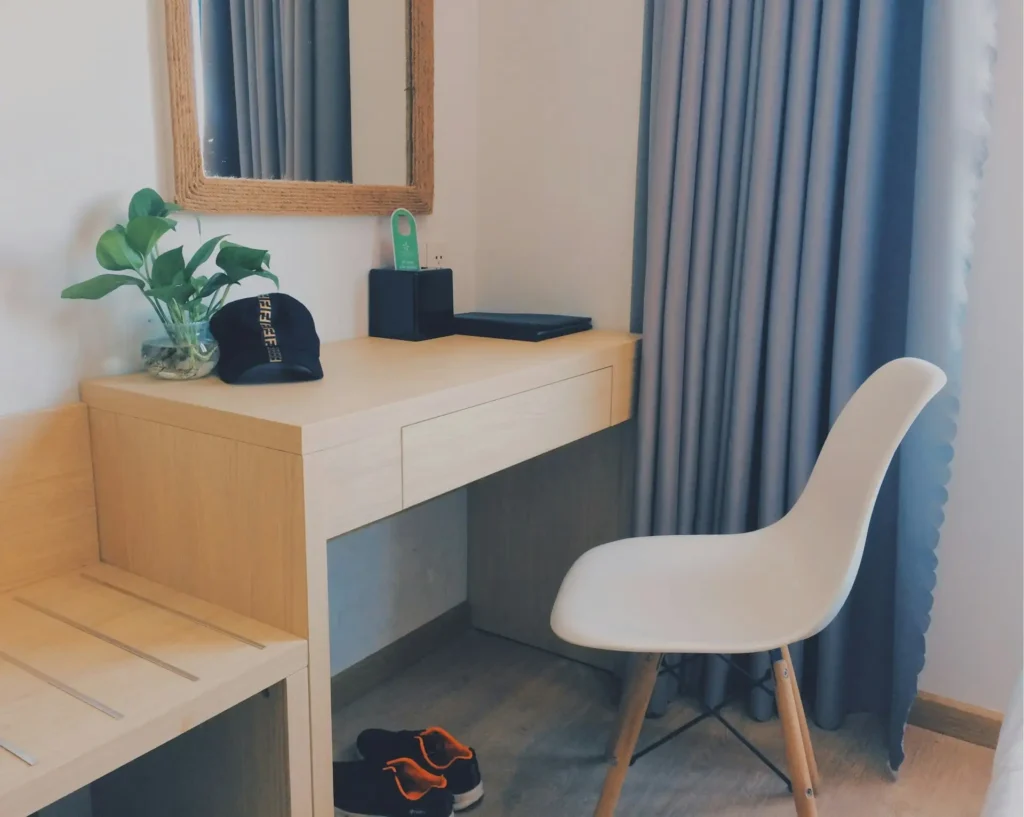
In small workspaces, keeping your desk clutter-free is key to boosting productivity and maintaining a clean, organized environment. Smart under-desk storage solutions and compact file cabinets are designed to help you make the most of limited space while keeping your office essentials neatly stored away.
Under-desk storage units, such as slim file cabinets, fit perfectly beneath your desk, providing a dedicated spot to store documents, stationery, and other work supplies.
These compact cabinets often feature lockable drawers and adjustable shelves, ensuring that important files are secure and easily accessible. By tucking away these items under your desk, you free up valuable desktop space for your computer, work materials, and creative endeavors.
In addition to file cabinets, desk organizers and storage trays are excellent tools for maintaining an uncluttered workspace. Look for multi-functional organizers that include compartments for pens, sticky notes, and small gadgets.
Many of these organizers are designed with space-saving in mind, so they don’t add bulk to your work area. With a proper cable management system incorporated into these storage solutions, you can also keep cables and cords out of sight, further enhancing the clean aesthetic of your home office.
Overall, investing in smart under-desk storage and compact file cabinets can transform a cramped work area into an efficient, clutter-free space. Not only does this organization boost your productivity, but it also creates a more pleasant and stress-free work environment, allowing you to focus on what matters most.
5. Monitor Stand or Laptop Riser
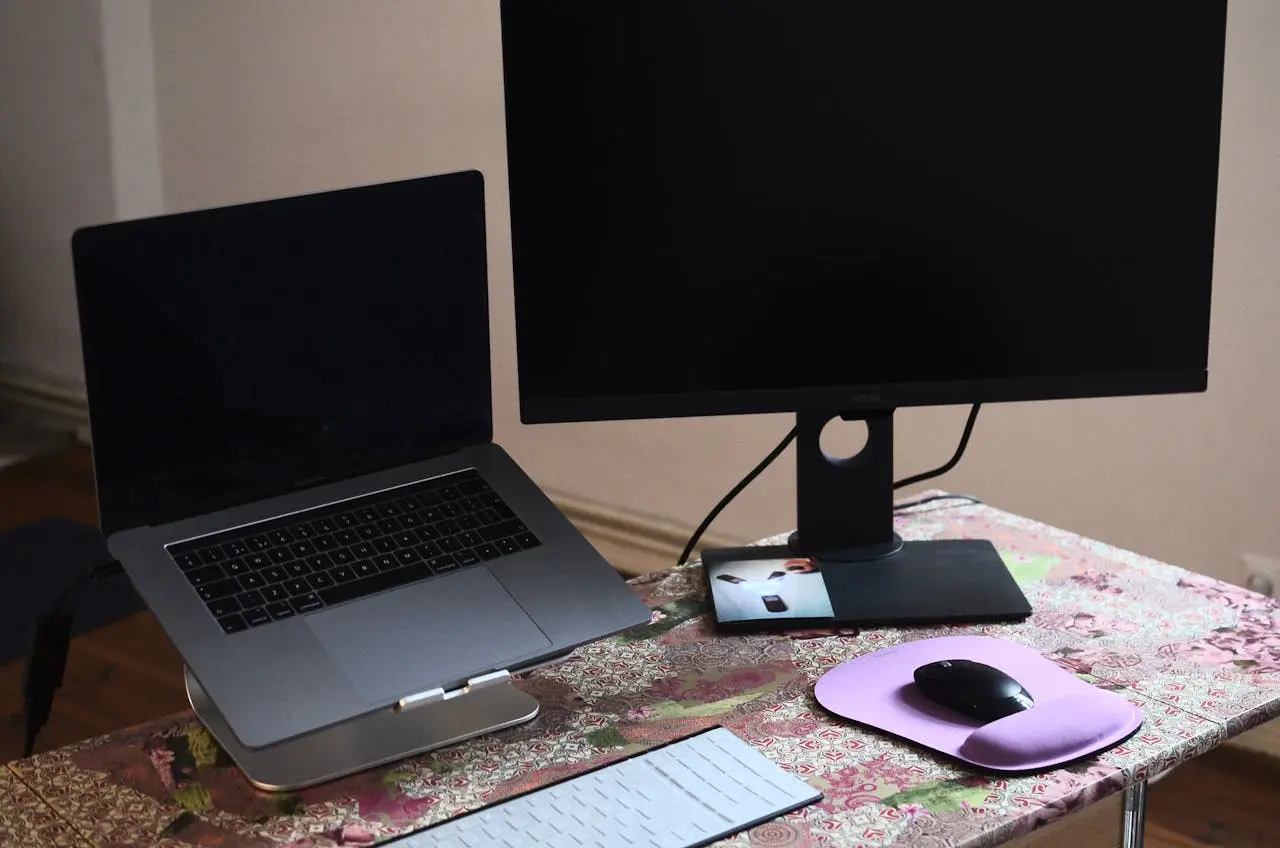
Proper screen positioning is crucial for reducing neck and eye strain, especially in compact workspaces where every inch counts. Elevating your monitor or laptop not only helps achieve a more comfortable viewing angle but also ensures that your screen is at eye level, reducing the risk of neck pain and eye fatigue.
Importance of Proper Screen Positioning
A well-positioned screen minimizes the need to tilt or strain your neck, thus maintaining a neutral posture. When your monitor or laptop is raised, your eyes can naturally fall on the center of the screen without forcing you to lean forward or look downward excessively.
This adjustment is key to preventing neck and shoulder pain over long hours of work. Additionally, an elevated screen can help reduce eye strain, as it allows for an optimal viewing distance, typically about an arm’s length, while also reducing glare from overhead lights or windows.
Best Monitor Risers for Small Desks
For small desks where space is limited, monitor risers and laptop stands offer a dual benefit: they free up valuable desk space underneath, which can be used for storing documents, keyboards, or other essential office supplies, and they provide a healthy viewing height. Some of the top options include:
- Adjustable Monitor Risers: These come with multiple height settings, allowing you to fine-tune the elevation to suit your ergonomic needs. Look for models with a stable, non-slip base to ensure safety and durability.
- Wooden Monitor Stands: Aesthetically pleasing and sturdy, wooden risers not only enhance your desk’s appearance but also offer robust support for your monitors. They are available in various finishes like walnut or oak, adding a touch of elegance to your workspace.
- Compact Laptop Risers: Specifically designed for laptops, these risers are slim and lightweight, making them perfect for small desks. They elevate your laptop to eye level and often include additional storage options beneath the surface, maximizing your workspace efficiency.
By investing in a quality monitor stand or laptop riser, you can significantly improve your workstation’s ergonomics. This simple adjustment promotes better posture, reduces discomfort, and ultimately contributes to a more productive and health-friendly work environment.
6. Foldable or Stackable Office Furniture
In compact workspaces, every inch counts. Foldable and stackable office furniture offers an excellent solution for maximizing space while still providing functionality and style.
By integrating multi-functional pieces into your workspace, you can easily transform your small office into a clutter-free, efficient environment.
Multi-Functional Furniture That Maximizes Space
Foldable office furniture is designed to serve more than one purpose. These pieces can be easily stowed away when not in use, freeing up valuable floor space. Stackable chairs and desks, for example, can be arranged during working hours and then neatly stacked or folded after use.
This flexibility is ideal for home offices, startups, or any workspace where space is limited. Multi-functional furniture not only optimizes your available area but also helps maintain a clean and organized look, ensuring that your workspace remains both stylish and practical.
Best Foldable Office Desks and Chairs for Compact Work Areas
When selecting foldable or stackable office furniture, look for designs that offer durability without sacrificing comfort. Here are some popular options:
- Foldable Office Desks:
Modern foldable desks are engineered to provide a stable work surface that can be easily collapsed when not needed. These desks are lightweight yet robust, often featuring quick-release mechanisms and compact designs. Some models even include built-in storage compartments, so you can tuck away office essentials and keep your desktop clear for productivity. These desks are perfect for home offices or small meeting areas, where a full-sized desk may be impractical. - Stackable Office Chairs:
Stackable chairs offer a great way to provide seating for multiple users without taking up too much space. These chairs are designed to be both ergonomic and lightweight, ensuring comfort during long hours of work. Many stackable chairs come with features like adjustable heights and lumbar support, combining convenience with proper ergonomic design. Their ability to be neatly stacked when not in use makes them ideal for flexible workspaces that need to quickly transition from collaborative settings to private work areas.
Using foldable or stackable furniture in your office not only maximizes available space but also enhances flexibility. Whether you’re hosting a quick meeting or need extra space for a brainstorming session, these versatile pieces can be adjusted to suit your needs, helping you maintain a productive and organized work environment.
By investing in multi-functional, foldable, or stackable office furniture, you can create a workspace that adapts to your dynamic needs while keeping your environment neat and clutter-free. This smart approach to workspace organization not only saves space but also boosts overall productivity making it a valuable choice for modern, compact offices.
Additional Ergonomic Accessories for Small Spaces
Optimizing a small workspace goes beyond choosing the right desk and chair—it also means adding accessories that boost comfort and organization.
Here are three essential ergonomic accessories designed to enhance your small office setup:
1. Anti-Fatigue Mats for Standing Desks
Standing desks have become popular for promoting movement and reducing the strain of prolonged sitting. However, standing for extended periods can lead to tired, aching legs and feet.
Anti-fatigue mats provide a cushioned, supportive surface that helps reduce pressure on your joints, improves blood circulation, and minimizes fatigue. These mats are especially useful in small spaces where changing seating arrangements is limited, ensuring you can work comfortably whether you’re standing or alternating between sitting and standing.
2. Cable Management Solutions for a Tidy Workspace
In compact offices, clutter is a common challenge. A tidy workspace is essential not only for aesthetics but also for productivity. Cable management accessories, such as clips, sleeves, and under-desk trays, help organize tangled wires and cords, keeping them out of sight and off your work surface.
By managing cables effectively, you reduce the risk of accidental tripping and create a clean, distraction-free environment that enables you to focus on your work without unnecessary interruptions.
3. Desk Lamps with Adjustable Brightness for Eye Comfort
Proper lighting is crucial to reduce eye strain and create an inviting workspace. Desk lamps with adjustable brightness allow you to tailor the light intensity to your task and ambient conditions.
These lamps are especially beneficial in small spaces where natural light may be limited or inconsistent. Adjustable LED desk lamps often feature energy-efficient settings, multiple color temperature options, and flexible arms, making it easier to position the light exactly where you need it.
This not only helps reduce eye fatigue during long work sessions but also contributes to a more comfortable and productive office environment. By integrating these additional ergonomic accessories into your small workspace, you can create an environment that supports both comfort and efficiency.
Anti-fatigue mats relieve the physical strain of standing, cable management systems keep your desk orderly, and adjustable desk lamps ensure optimal lighting for your eyes. Together, these accessories help you maintain a healthier, more organized workspace even in the tightest of spaces.
Tips for Setting Up an Ergonomic Office in a Small Space
Creating an ergonomic office in a compact area doesn’t mean sacrificing comfort or style. With smart planning and design choices, you can establish a workspace that promotes better movement, improves posture, and feels surprisingly spacious.
Here are some practical tips to help you transform even the smallest space into an efficient and comfortable office:
Arrange Furniture for Better Movement and Posture
- Prioritize Open Pathways:
Position your essential furniture such as your desk and chair in a way that leaves clear walkways. This allows for ease of movement and reduces the risk of bumping into items while transitioning between tasks. - Optimize Your Desk Layout:
Place your desk in a location that benefits from natural light and has enough room to move around. Consider an L-shaped or corner desk that encourages a balanced, upright posture and keeps your computer screen directly in front of you, reducing neck twisting. - Select Ergonomic Furniture:
Choose chairs with adjustable lumbar support and desks that allow you to alternate between sitting and standing. Proper ergonomic furniture supports neutral posture and helps prevent back, neck, and shoulder strain over long periods.
Choose Light Colors and Minimal Decor for a Spacious Feel
- Light and Neutral Palettes:
Using light colors such as whites, creams, or pastels on walls and large furniture can visually expand a small space. These hues reflect more natural light, creating a bright and airy atmosphere that makes the room feel larger. - Declutter with Minimalist Decor:
Embrace a minimalist approach by keeping decorations simple and purposeful. Avoid overcrowding surfaces with too many items. Instead, use a few carefully chosen pieces of art or personal items to add warmth without overwhelming the space. - Streamlined Furniture Design:
Opt for sleek, modern furniture with clean lines. Pieces that serve multiple functions (like desks with built-in storage) help reduce clutter and maintain a neat, open environment.
Maximize Vertical Space with Shelves and Wall-Mounted Organizers
- Utilize Wall Space Efficiently:
In a small office, vertical storage is a game-changer. Install wall-mounted shelves or organizers to store books, files, and office supplies. This frees up valuable desk space while keeping essential items within easy reach. - Choose Compact Storage Solutions:
Look for stackable or floating storage units that blend seamlessly with your decor. These options not only provide additional storage but also add a stylish touch to your office setup. - Create a Coordinated Look:
Use matching or complementary wall-mounted organizers and shelves to establish a cohesive and organized look. This integration enhances the overall appearance of your workspace and ensures everything has its designated place.
By thoughtfully arranging your furniture to allow for natural movement, choosing light colors with minimal decor, and utilizing vertical storage solutions, you can create an ergonomic office that feels both spacious and inviting even in the smallest of areas.
These design strategies not only improve your posture and comfort but also boost productivity, helping you make the most of your compact workspace
Conclusion:
Creating a functional and comfortable workspace in a small area is entirely achievable with the right ergonomic office furniture. By investing in adjustable desks, supportive ergonomic chairs, space-saving wall-mounted or foldable desks, and smart storage solutions, you not only enhance your physical well-being but also boost your productivity. These elements work together to reduce strain, improve posture, and create a clutter-free, inviting environment even when space is limited.
With additional accessories like monitor risers for optimal screen positioning, anti-fatigue mats for added comfort during prolonged standing, and effective cable management systems, every component of your office can contribute to a healthier, more efficient work setup.
Choosing light colors and minimal decor further enhances the spacious feel, while vertical storage options ensure that every inch of your compact workspace is maximized.
In summary, ergonomic office furniture for small spaces is more than a trend it’s a smart investment in your health and productivity. By designing a workspace that adapts to your needs, you can reduce the risk of back, neck, and eye strain and enjoy a more organized, stress-free environment.
Upgrade your small office today and experience the benefits of an ergonomic setup that supports both your comfort and your success.

